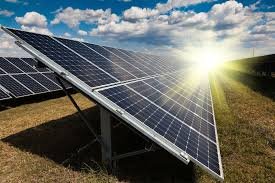As the demand for renewable energy grows, businesses and industries are increasingly turning to solar power to reduce electricity costs and lower their carbon footprint. A 100-kilowatt solar system is a popular choice for commercial establishments, factories, and large institutions. This blog will cover all aspects of a 100kW solar system, including its benefits, components, installation process, costs, and return on investment.
What is a 100kW Solar System?
A 100kW solar system is a large-scale solar photovoltaic (PV) system designed to generate around 400 to 450 kWh of electricity per day, depending on location, sunlight availability, and panel efficiency. It is suitable for medium to large businesses that consume significant energy daily, helping them cut electricity bills and reduce reliance on the traditional power grid.
Benefits of a 100kW Solar System
Investing in a 100kW solar power system offers multiple advantages:
1. Cost Savings
- Reduces electricity expenses by generating free energy from the sun.
- Protects businesses from rising electricity prices.
- Allows for potential earnings through solar feed-in tariffs (selling excess power back to the grid).
2. Environmental Impact
- Lowers carbon emissions, contributing to a greener planet.
- Reduces dependence on fossil fuels.
- Supports corporate sustainability goals and green initiatives.
3. Government Incentives & Rebates
- Businesses may qualify for Small-Scale Technology Certificates (STCs) or Large-Scale Generation Certificates (LGCs) under Australia’s renewable energy policies.
- Tax benefits and grants may be available depending on location and policies.
4. Energy Independence & Security
- Reduces dependency on traditional power sources.
- Offers a reliable power solution during grid failures or power outages.
- Can be integrated with battery storage for enhanced energy resilience.
Key Components of a 100kW Solar System
A 100kW solar panel system consists of several essential components:
1. Solar Panels
- A system of this size typically includes 250–270 solar panels (depending on wattage per panel).
- Panels are available in monocrystalline and polycrystalline options, with monocrystalline being more efficient.
2. Inverters
- Converts DC (direct current) from solar panels into AC (alternating current) for commercial use.
- String inverters or microinverters can be used based on system requirements.
3. Mounting Structure
- Supports the solar panels and ensures optimal tilt for maximum sunlight exposure.
- Can be installed on rooftops or ground-mounted.
4. Battery Storage (Optional)
- Stores excess energy for later use, ensuring power availability during peak hours or at night.
- Helps businesses become more self-sufficient in energy consumption.
5. Monitoring System
- Allows businesses to track energy production, consumption, and savings in real time.
- Provides alerts for maintenance and system performance checks.
Installation Process of a 100kW Solar System
- Site Assessment & Feasibility Study
- Evaluates roof space, sunlight availability, and power consumption needs.
- Determines the best system design for efficiency.
- System Design & Engineering
- Experts design a solar system that fits energy requirements and local regulations.
- Ensures compliance with grid connection rules.
- Approval & Permits
- Acquiring necessary permits and approvals from local authorities and energy providers.
- Installation & Grid Connection
- Mounting panels, connecting inverters, and wiring the system.
- Connecting to the local electricity grid for net metering.
- Testing & Commissioning
- System undergoes performance testing before activation.
- Ensures optimal energy output and functionality.
Cost of a 100kW Solar System
The price of a 100kW solar system varies based on quality, brand, and additional features such as battery storage. In Australia, the estimated cost ranges from $90,000 to $140,000, depending on:
- Panel and inverter efficiency
- Installation complexity
- Government incentives and rebates
Despite the initial investment, businesses can recover costs through energy savings, incentives, and feed-in tariffs, making it a financially viable option.
Return on Investment (ROI) & Payback Period
A well-designed 100kW solar system can generate annual savings of $20,000 to $35,000 on electricity bills. The payback period typically falls between 3 to 6 years, depending on factors like location, energy prices, and solar incentives.
Factors affecting ROI:
- Daily energy consumption
- Local electricity rates
- Government rebates and feed-in tariffs
- Efficiency of solar panels and inverters
Is a 100kW Solar System Right for Your Business?
If your business has high electricity usage and available roof space, a 100kW solar system can be a smart long-term investment. It not only reduces operating costs but also enhances sustainability efforts, positioning your company as an eco-conscious leader.
For expert guidance and installation of a 100kW solar-powered system, visit Green solar solutions and explore customized solar solutions for your business.
Final Thoughts
A 100kW solar system is an excellent way for businesses to transition to renewable energy. With substantial cost savings, environmental benefits, and government incentives, it’s a profitable and sustainable choice. If you’re considering a solar solution, consulting with a reputable provider will ensure you maximize your investment and achieve long-term energy independence.

